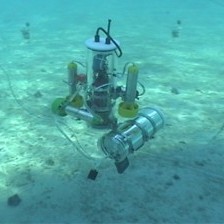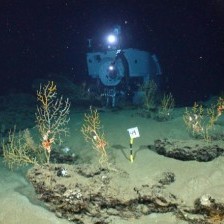Observing the Ocean
The Earth’s Last Frontier
The oceans are the last great frontier on our planet. They are largely dark, in that they remain mysterious to us, but also dark because light from the sun does not travel far into the ocean. To observe what is happening in the interior of the ocean we must develop and exploit some of the most sophisticated observing methodologies and tools that have ever been invented.
The challenge is made even greater because the oceans are extraordinarily difficult to work in. Salt water is very corrosive, pressures at depth are enormous, and communication and retrieval of data is difficult. Moreover, the ocean is a very expensive medium in which to operate, and there is always a tension between ‘many and cheap’ and ‘few and expensive’ devices.
The Necessity of Invention
Researchers at MIT and WHOI are developing new methods of acoustic sensing that allow the interior ocean to be probed with unprecedented detail and accuracy. Meanwhile, we are designing robots, automated vehicles, and tethered devices that can operate at extraordinary depths and pressures, sometimes broadcasting their data through acoustic modems. And, when possible, we are working to invent devices that are both recoverable and reusable.
Bringing Together Data with Models
Data from even our cleverest devices will always be patchy in space and time, so our researchers are also developing numerical models to fill in the gaps and techniques to meld data and models together. Devices are now being devised by our engineers that not only communicate among themselves, but also with computational models of ocean flow, creating an unparalleled level of detail in our description and understanding.
A key goal of our approach is the integration of novel sensing technologies to yield unprecedented observations of coupled biological, chemical, and physical processes in the ocean from the macro to micro scale. These sensing abilities are crucial to scientific, engineering, and policy advancements in the ocean environment since they provide the raw data needed to understand, monitor, and make predictions about the ocean state.
More often than not, the first data gathered using newly engineered technology leads to cutting edge scientific discovery and exciting cross-fertilization between scientific and technological advances.








